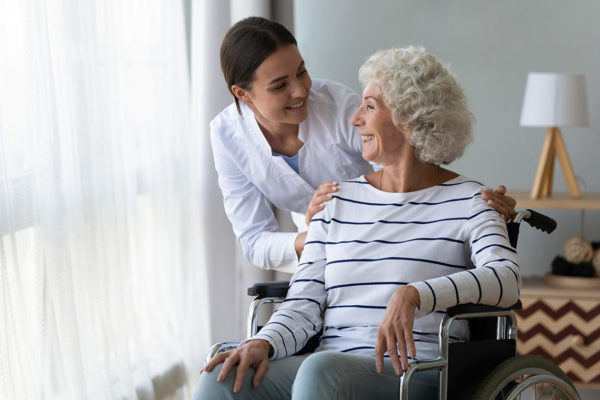How often do you move during a day? Do you start your day with stretching to gain more flexibility? Do you take a walk to limber up your joints and work your larger muscle groups? Maybe you garden?
Perhaps you are not physically active at all! Maybe you spend more time inside sitting while watching your favorite shows on TV. Maybe you were really active in your past, but as you have aged, activity and movement are not a part of your daily routine.
Regardless of your age or circumstance, movement is so important. According to the World Health Organization (WHO), their 2020 guidelines continue to affirm that some physical activity is better than none and that more physical activity is better for optimal health outcomes.1As life expectancy increases, preventing decline in physical and mental function has become a health priority.
Older adults can lose their mobility and end up having an increased chance of hospitalization, being less likely to remain in the community and experience a decreased quality of living. There are studies that suggest that physical exercise may prevent disability, however there needs to be more studies conducted regarding cognitive decline and the effects of exercise.2 We can, however, gain insight to the effectiveness of exercise on cognition by the benefits seen in exercise in general.
Regular physical activity has many benefits! It can strengthen your muscles, improve brain health, reduce risk of disease, and improve your abilities with daily activities (e.g. playing with grandkids, walking to the mailbox, etc). You can even decrease your fall risk with regular activity. Everyone can experience the health benefits of physical activity – age, abilities, ethnicity, shape, or size do not matter. The Centers for Disease Control (CDC) recommends 30 minutes of physical exercise five days per week for all people.3 According to the American Physical Therapy Association, the geriatric prescription for exercise recommends 3-5x’s per week at various intensity levels depending upon your health and frailty, focusing exercise on muscle performance, aerobic activity, flexibility and balance.4 And in the recent 2020 guidelines released by the WHO, they strongly recommend that older adults (age 65 and older) should do multicomponent activity that emphasizes functional balance and strength training for 3 or more days a week to increase functional ability and decrease fall risk.1
It is super important to note, older adults should not begin an exercise program without seeking professional guidance and clearance from a health care professional. A health care professional can help determine a safe baseline and assist the older adult to build up to the recommended target of 3-5x’s per week. Jennifer Nash (physical therapist), in a recent ChoosePT podcast, encourages finding a buddy to increase your accountability and to have fun with exercise! There is a lot of evidence that active lifestyles impart an assortment of benefits and that being consistent with your activity creates lasting benefits.5
Exercise is a great way to keep an older adult involved in activities. The kind of exercise you do depends on what activities are typically enjoyed – often times a health care professional can help you find ways to modify an activity so that it can be continued if you are currently having difficulty. Walking is a great way to get movement. Try a short walk outside and if it is too hot or humid, take your walk to an indoor mall. Making small adjustments to activities can help you accomplish them and keep you moving.
So now is the time. Go challenge yourself and incorporate movement in your day. Remember to just simply move…engage in something meaningful and relevant.
References:
- Bull FC, Al-Ansari SS, Biddle S, et al. (2020) World Health Organization 2020 guidelines on physical activity and sedentary behaviour. British Journal of Sports Medicine 54:1451-1462. doi:10.1136/bjsports-2020-102955
- Quigley A, MacKay-Lyons M, Eskes G. (2020) Effects of exercise on cognitive performance in older adults: a narrative review of the evidence, possible biological mechanisms, and recommendations for exercise prescription. Journal of Aging Research 2020;1407896:1-15.
- Mace N, Rabins P. The 36-Hour Day. Baltimore: Johns Hopkins University Press; 2017: 84-90.
- Section on Geriatrics, APTA available at: https://aptageriatrics.org/pdfs/Exercise%20Reccomendations%20for%20Older%20Adults.pdf. Accessed September 1, 2022.
- APTA. ChoosePT.com. Benefits of Physical Therapy for People with Alzheimer’s Disease. 2019. Available at: https://www.choosept.com/podcast/benefits-of-physical-therapy-people-with-alzheimer. Accessed September 1, 2022.


